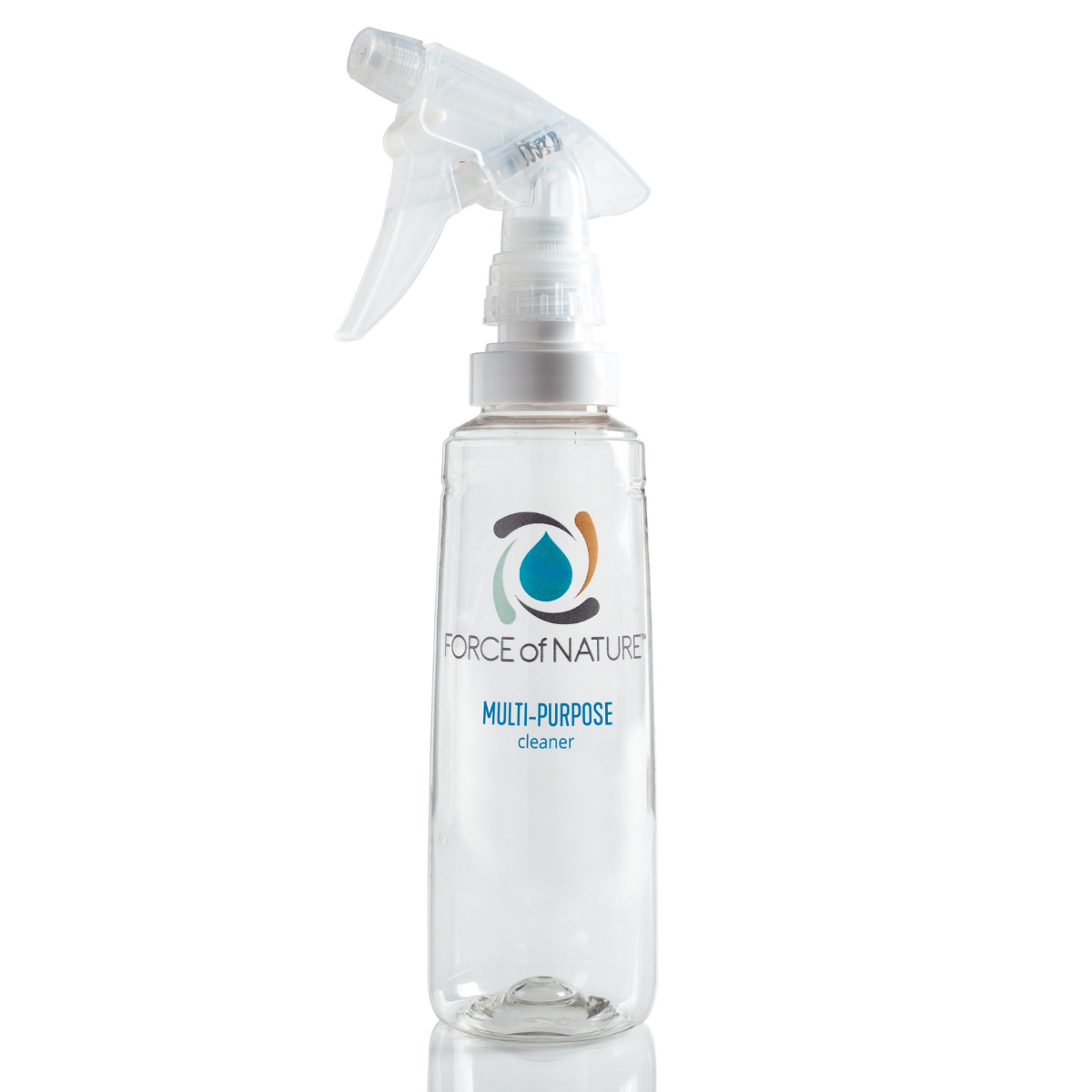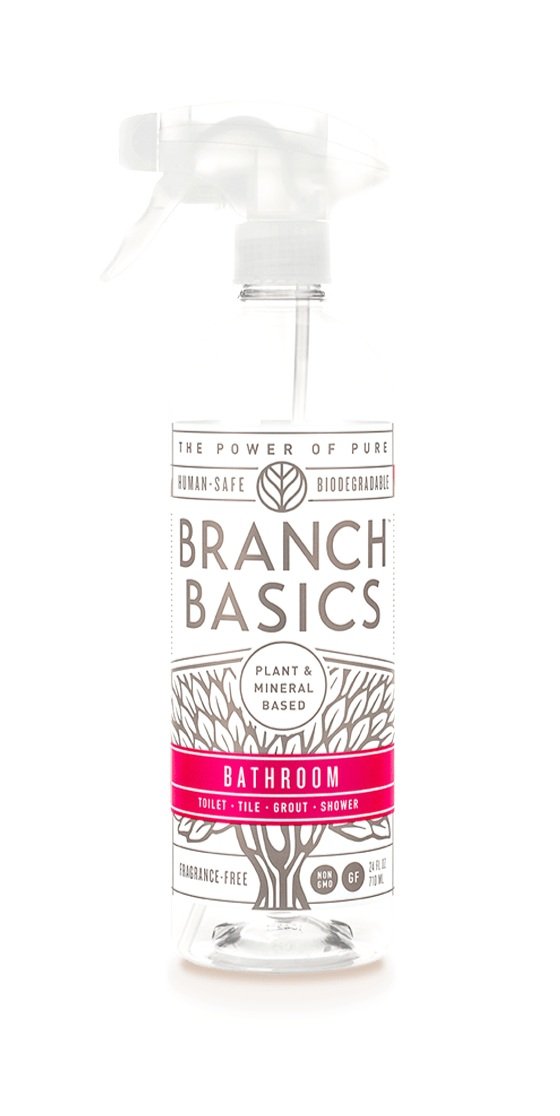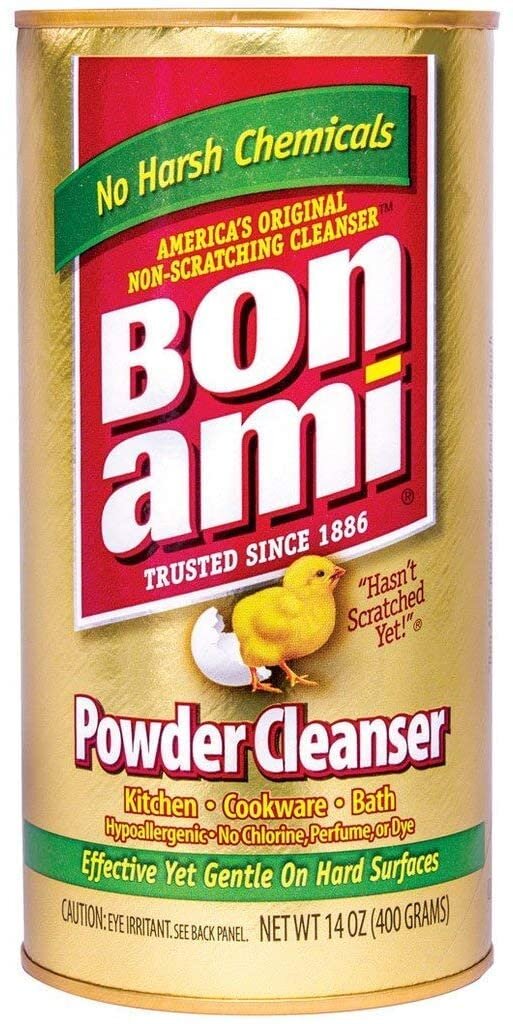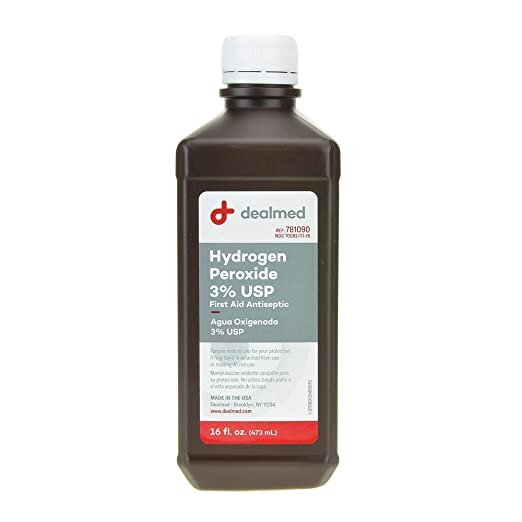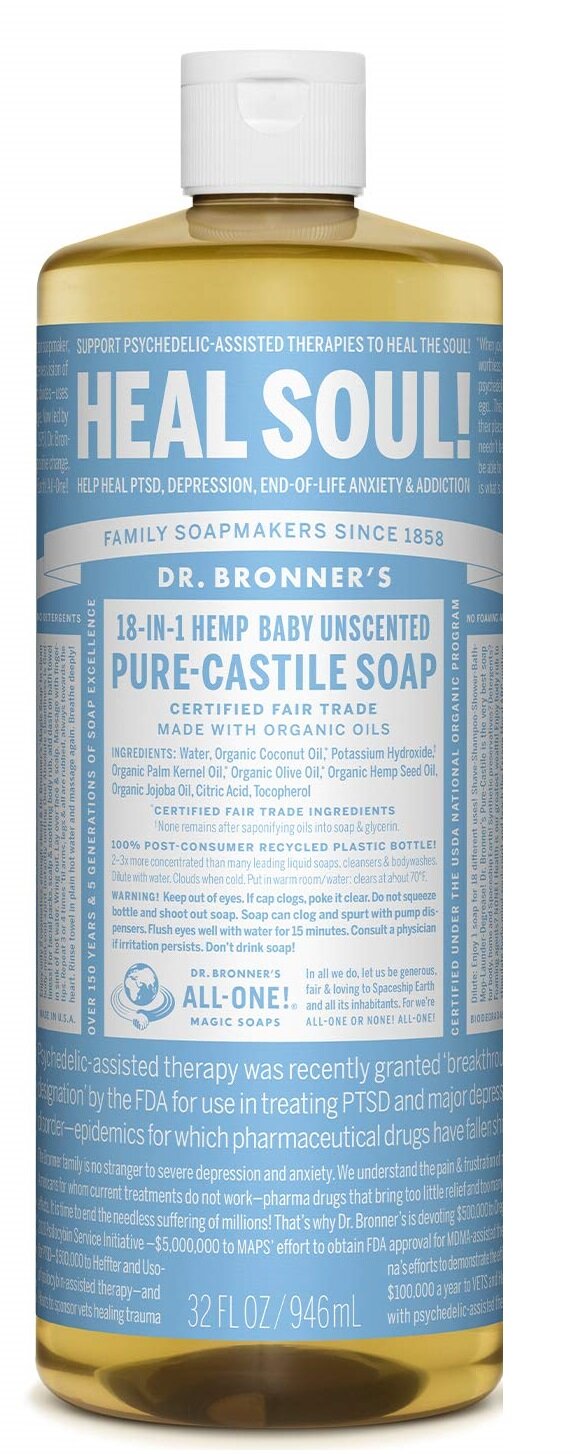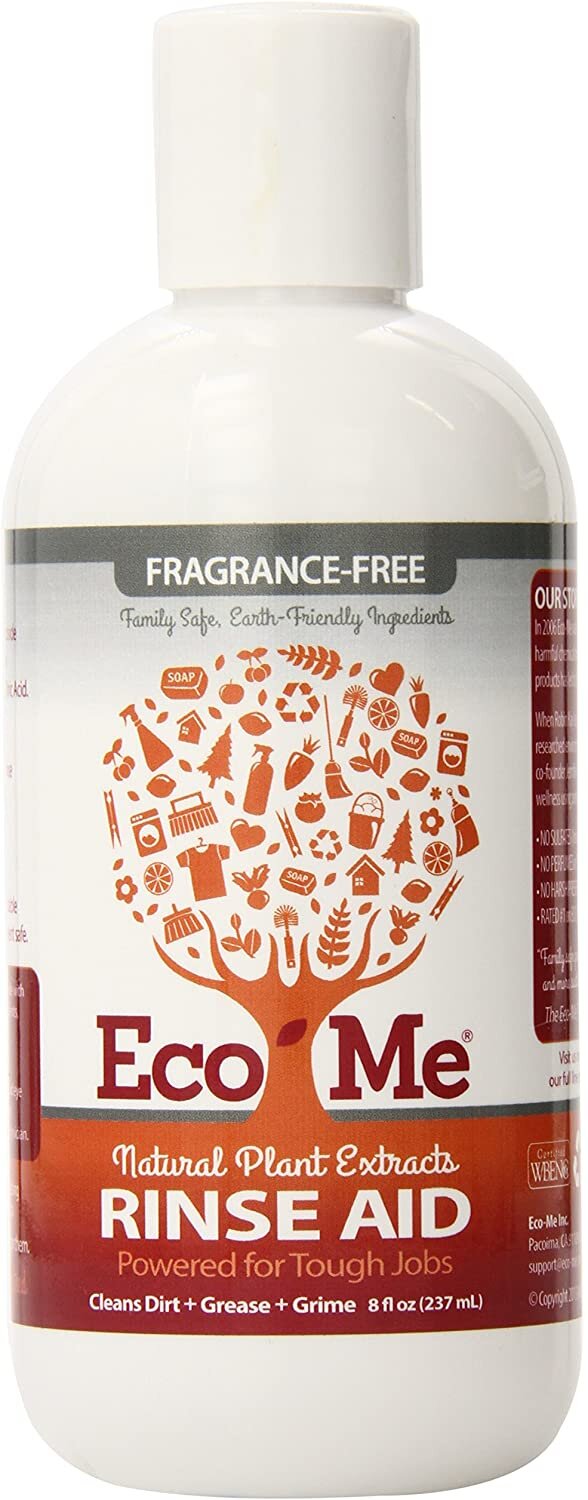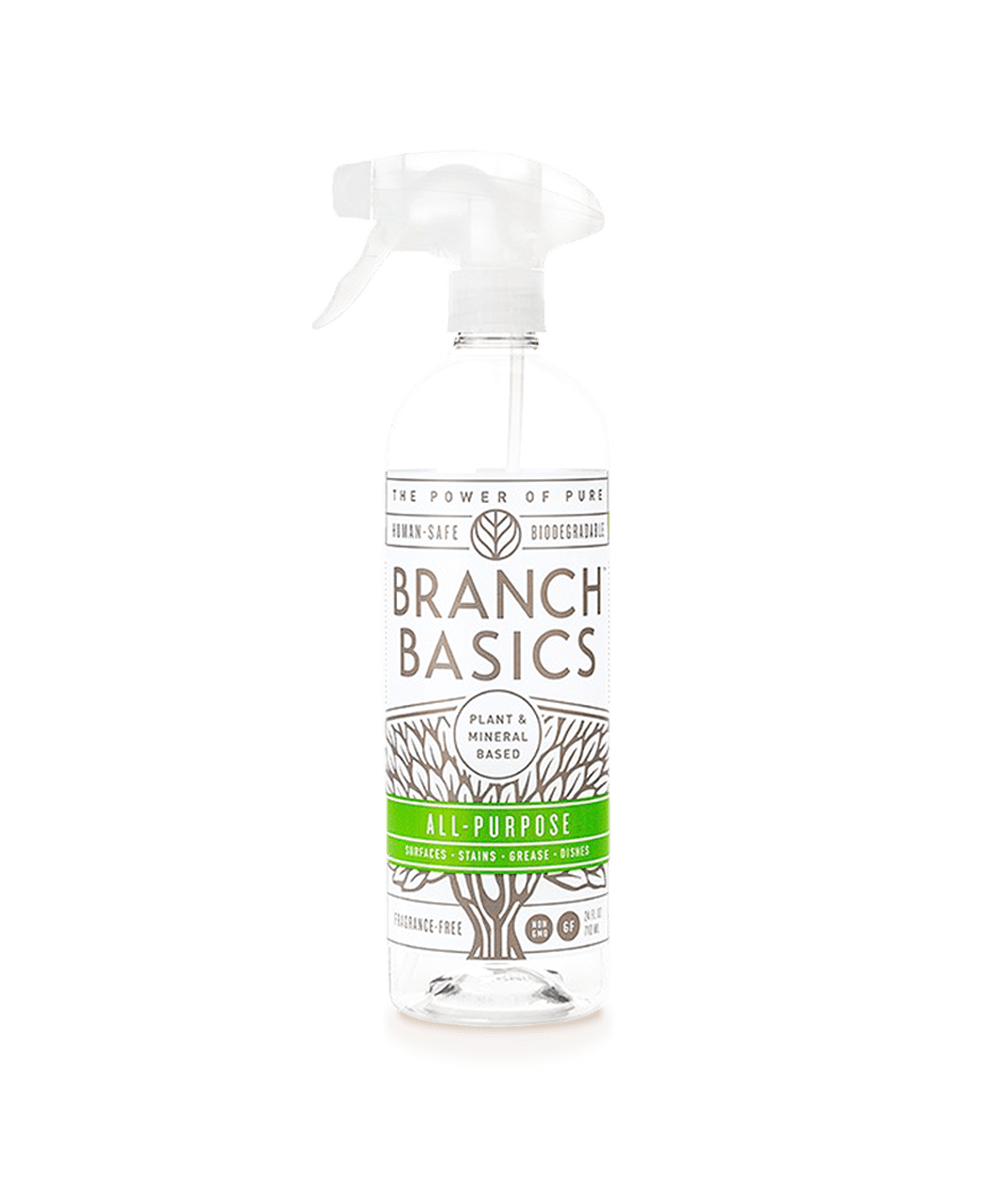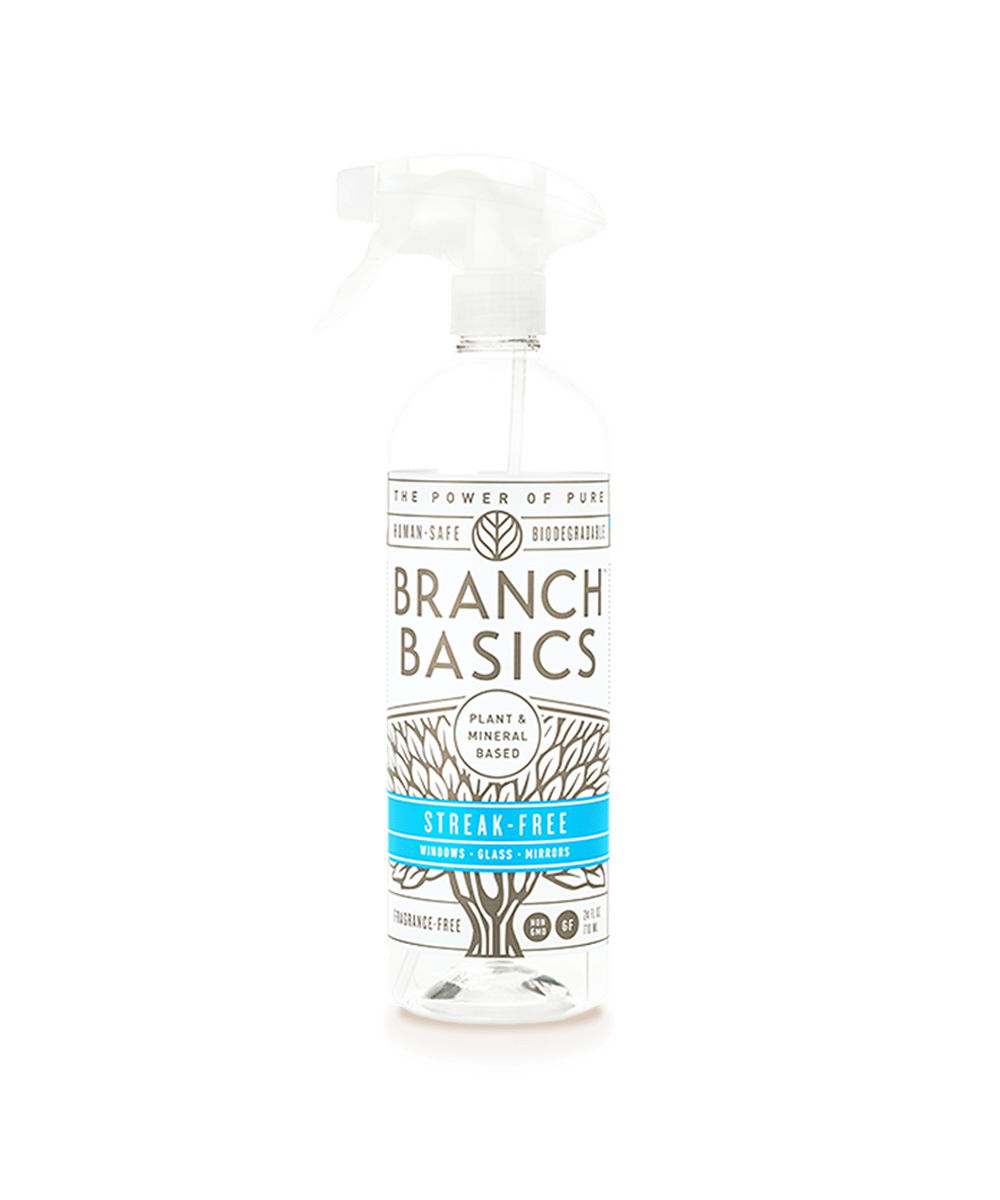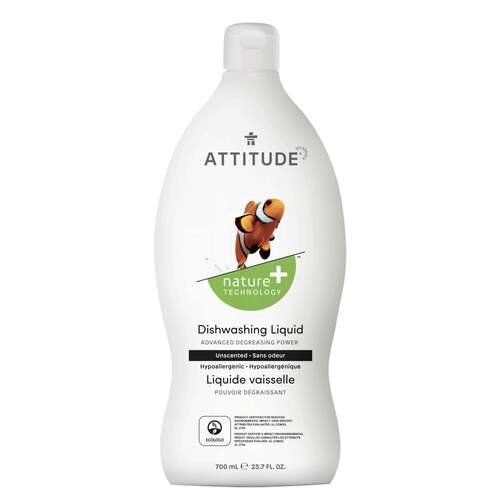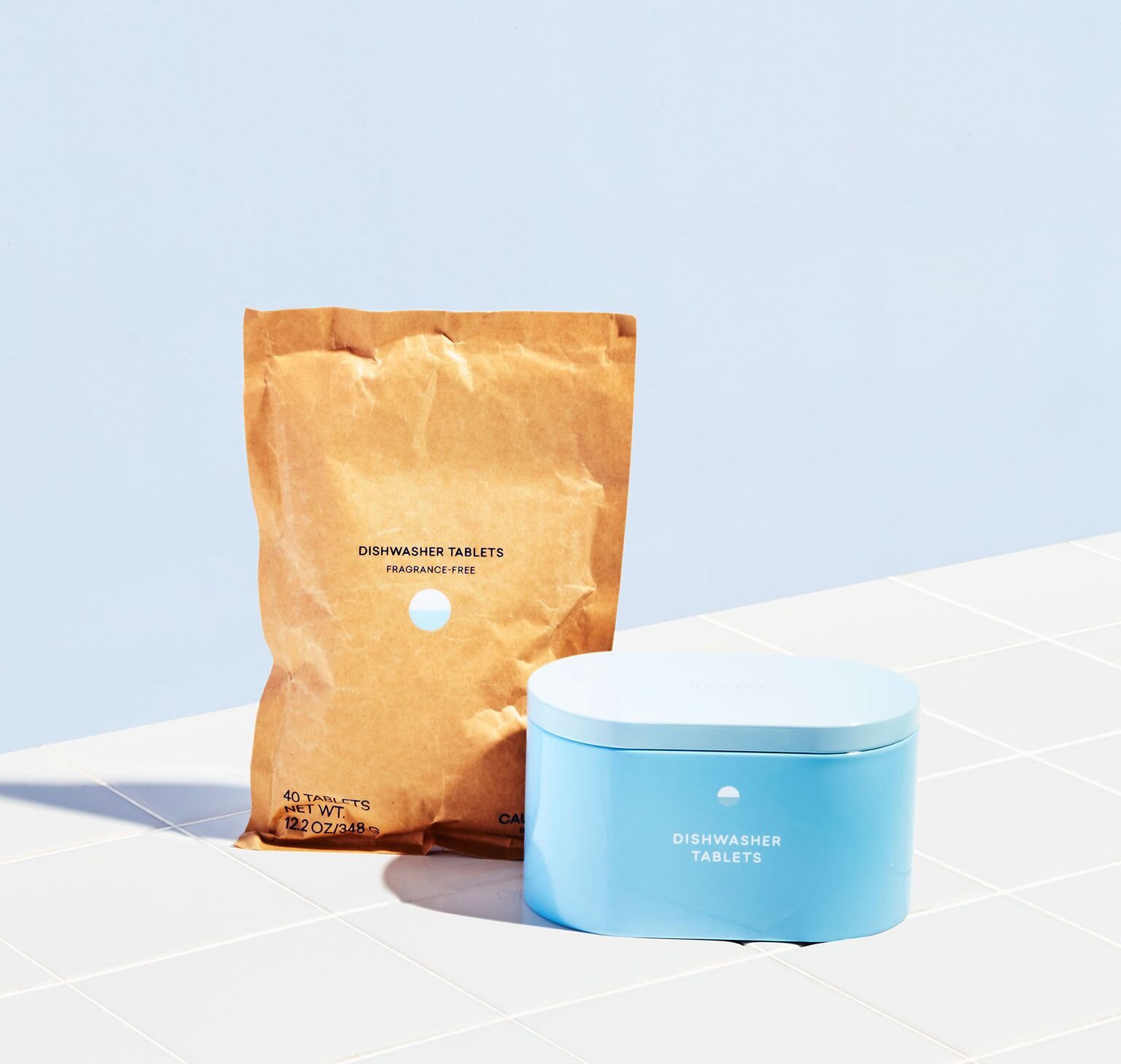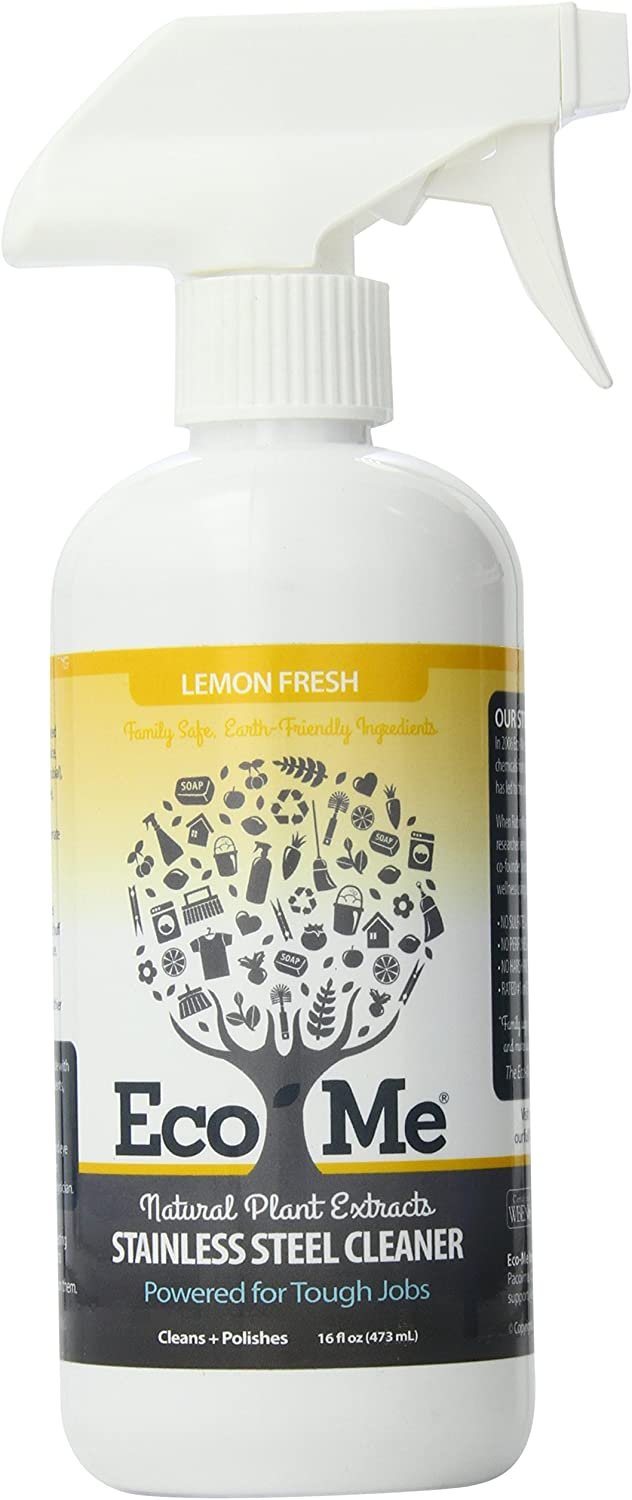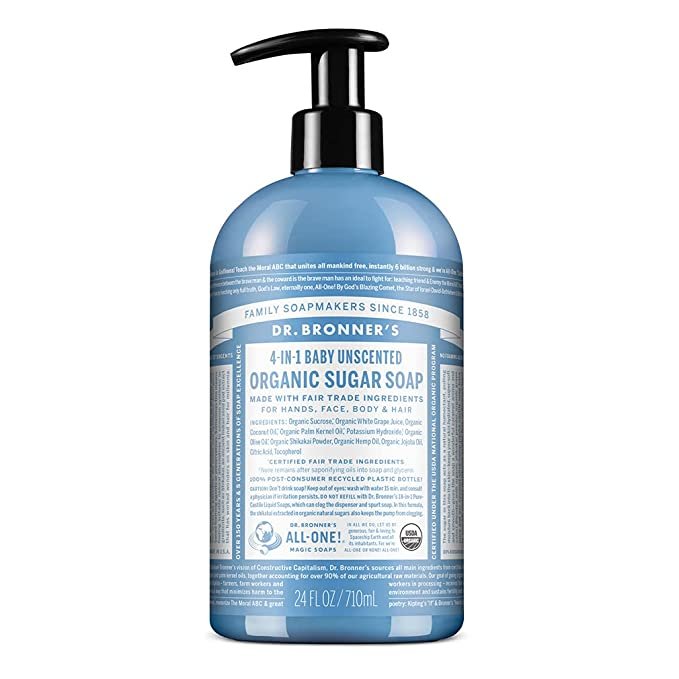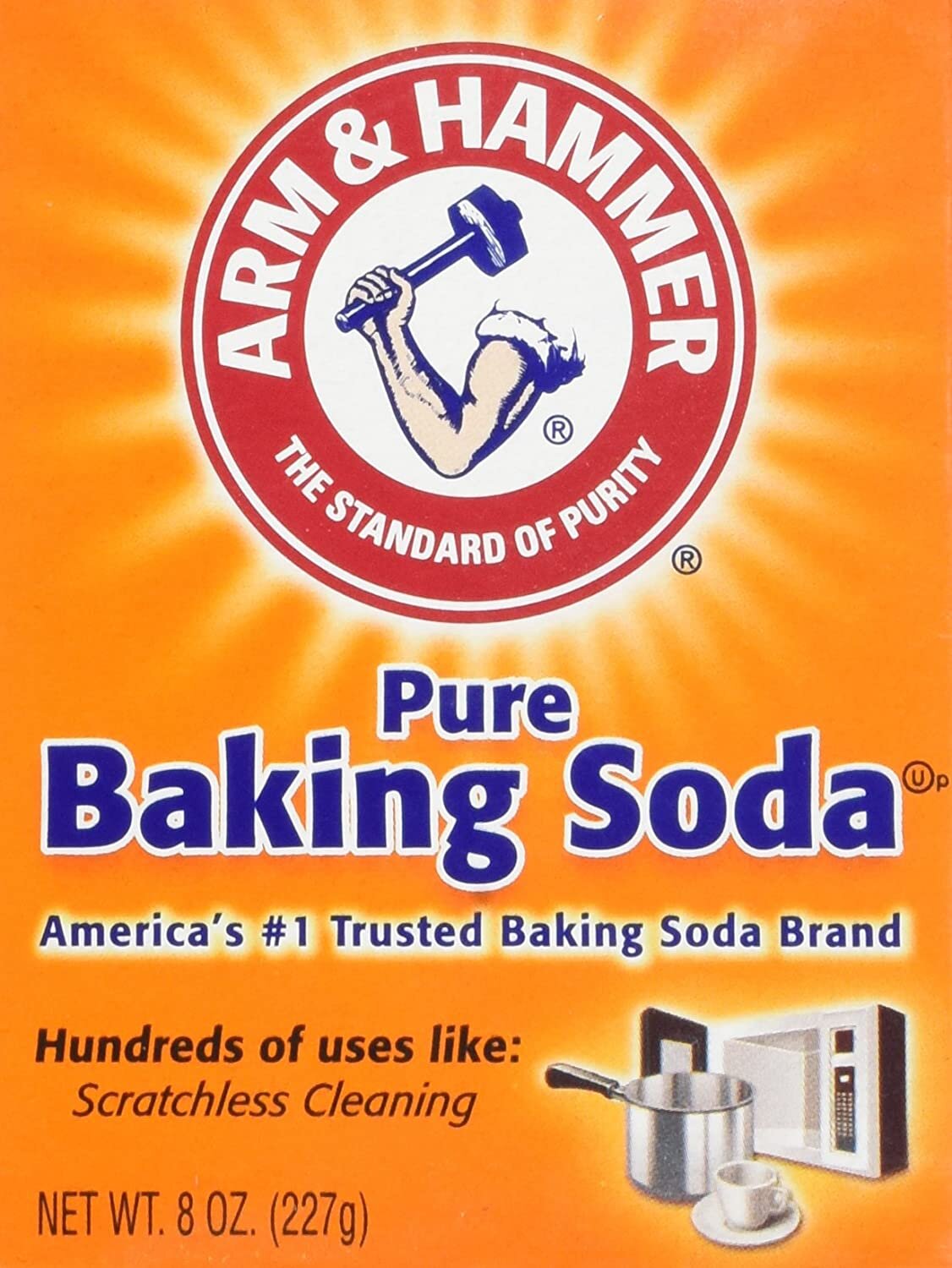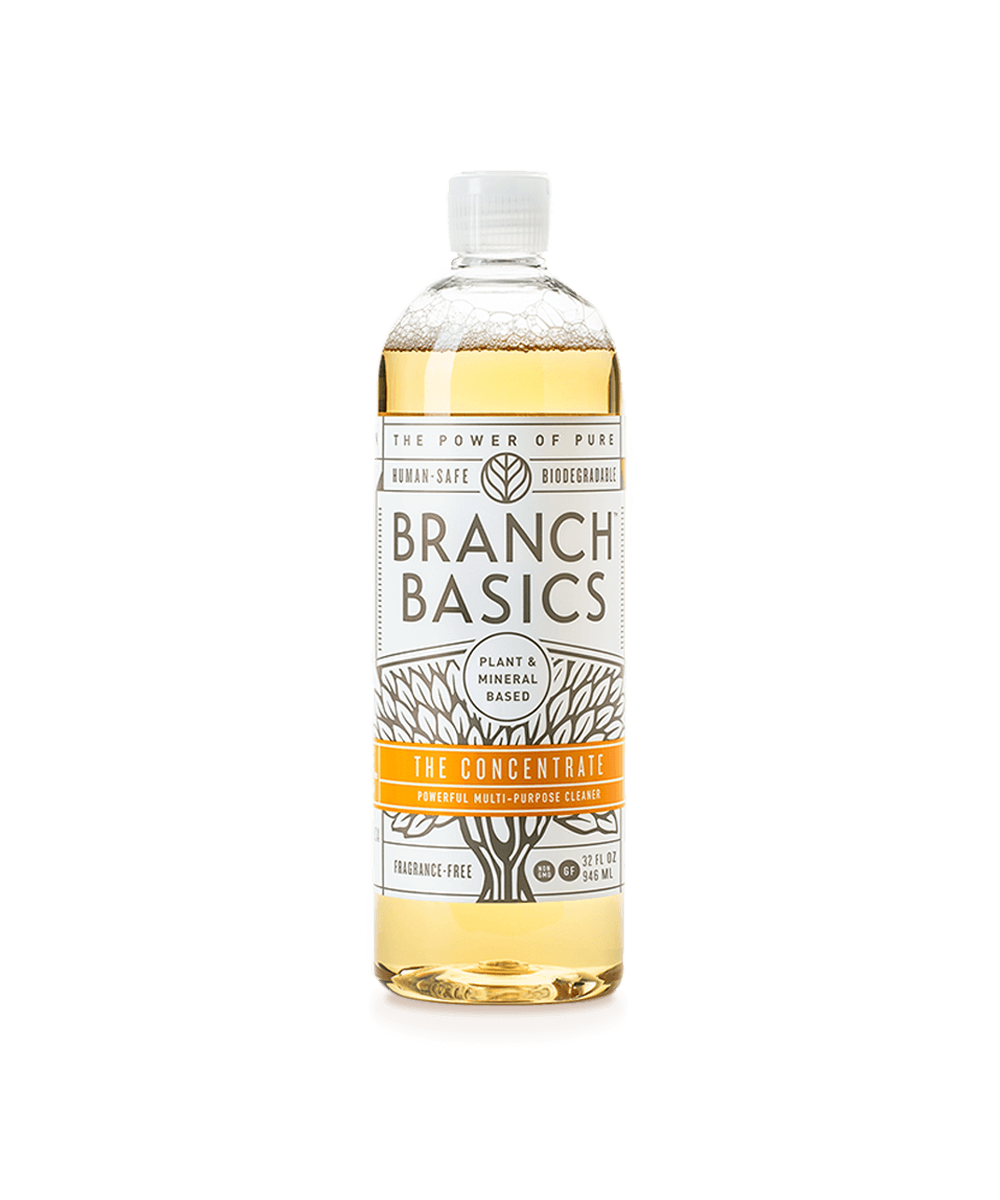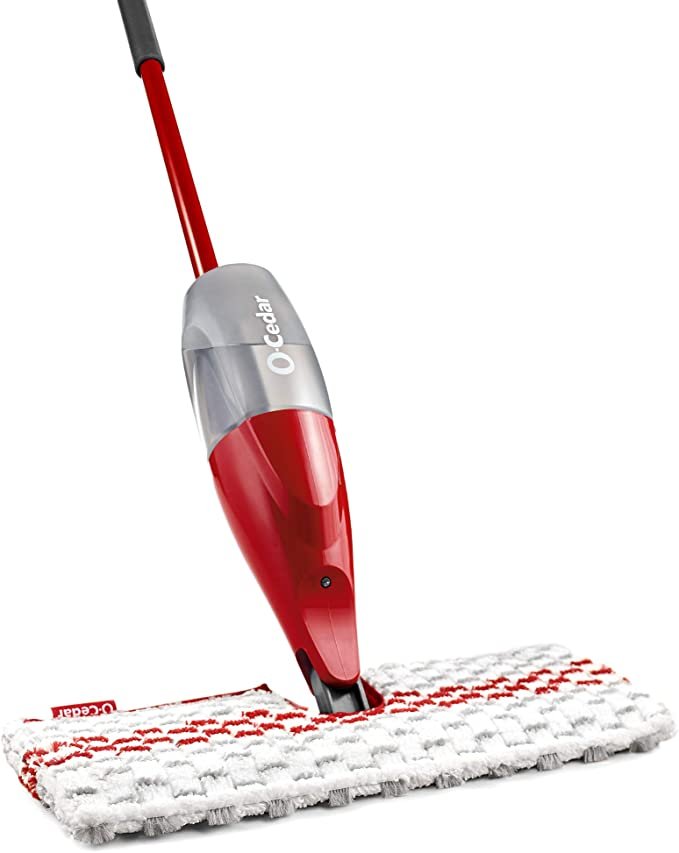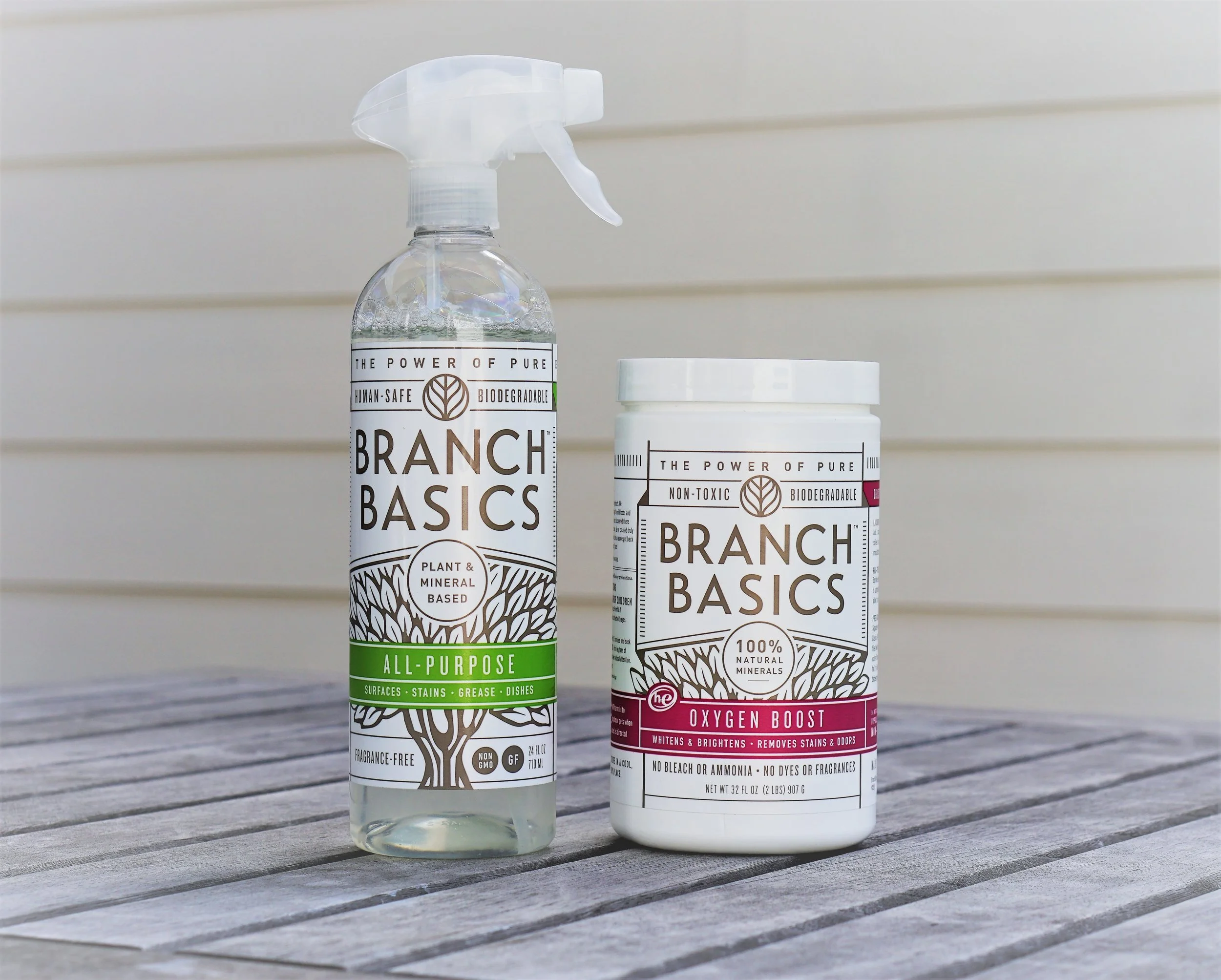Non-Toxic Cleaning Guide 2021
Strong disinfectants, bleach, and fragrant cleaners are major contributors to poor air quality. They emit hundreds of harmful volatile organic compounds, cause respiratory irritation and migraine headaches among other adverse health effects.
Switching to natural and non-toxic cleaning products can significantly improve the air quality in our homes. These cleaning essentials are just as effective without unnecessary fragrances and harmful ingredients.
Bathroom
Bon Ami Powder Cleanser
For toilet bowls and dirty sinks, sprinkle Bon Ami powder, add water, scrub or brush the surface, and then rinse.
Branch Basics Bathroom And Oxygen Boost
Clean countertops and the outer surface of toilets with Branch Basics Bathroom. To whiten grout, spray Branch Basics Bathroom then scrub with Oxygen Boost and wipe away. For mold spots in grout, follow up with hydrogen peroxide and let dry.
Save 15% on Branch Basics start kits with code switchnatural.
Force Of Nature Disinfectant
To disinfect surfaces spray, Force of Nature (which uses hypochlorous acid) or 3% hydrogen peroxide. For best results, wait 10 minutes before wiping. Always clean surfaces before disinfecting. To learn more about disinfectants, read this blog post on how to safely disinfect.
Save 25% off the Force of Nature Extra Value Bundle + free shipping with code SWITCHNATURAL.
Squeegee
For glass shower doors, use a squeegee after showering to prevent water stains and build up.
Laundry
Vinegar For Fabric Softener
Add vinegar to the fabric softener section of your washer. Vinegar adds cleaning power, softens fabrics, and leaves them smelling and feeling fresh. The vinegar smell dissipates in the wash.
Branch Basics Liquid Laundry Detergent
For a regular load of laundry, use one cap full of Branch Basics Laundry. For extra dirty loads and to brighten whites, add a scoop of Oxygen Boost to the main section of your washer.
Branch Basics Oxygen Boost Stain Remover
For clothing stains, spray with All Purpose, sprinkle Oxygen Boost and agitate with a brush (or rub in gently for delicate fabrics). Follow with a regular wash cycle. For tougher stains, soak overnight.
Save 15% on Branch Basics Starter kits with code SWITCHNATURAL.
Kitchen
Attitude Dish Soap
For handwashing dishes, use Attitude dishwashing liquid to effectively clean without harmful preservatives.
Bon Ami Powder Cleanser
To remove stubborn spots on cookware and to clean sinks, sprinkle Bon Ami, brush with a small amount of water, then rinse.
Blueland Dishwasher Tablets
For dishwasher detergent without fragrance, try Blueland tablets. Learn more about why you want to avoid fragrance in this post.
Eco Me Rinse Aid
For dishwashers that require rinse aid, use Eco Me, which is made with a few simple ingredients.
Branch Basics All Purpose Spray
Branch Basics All Purpose cleaner is great for countertops, stovetops, ovens, and highchairs. It is effective yet gentle, even for marble countertops. All Purpose is safe for food surfaces, pots, and dishes.
Dr. Bronner’s OR Branch Basics Foaming Hand Soap
Mix your favorite Dr. Bronner’s Castile Soap (comes in unscented or an array of scents) with 1/4 soap and 3/4 water into a foaming soap pump.
A Branch Basics starter kit includes a refillable foaming hand soap pump. Follow the fill lines when mixing water with Branch Basics concentrate. Add essential oils for scent if desired.
Force Of Nature Disinfectant
To disinfect surfaces spray, Force of Nature (which uses hypochlorous acid) or 3% hydrogen peroxide. For best results, wait 10 minutes before wiping. Always clean surfaces before disinfecting. To learn more about disinfectants, read this blog post on how to safely disinfect.
Branch Basics Glass Cleaner
Combine distilled water with a drop of Branch Basics Concentrate for a streak-free glass and window cleaner.
Save 15% on Branch Basics Starter kits with code SWITCHNATURAL.
Floors, Rugs, And Upholstered Furniture
Branch Basics Floor Cleaner
For small spots and spills on floors, use All Purpose. As an all over floor cleaner, mix Branch Basics Concentrate with water in a spray mop or bucket. For vinyl, linoleum, and tile floors, use 1 teaspoon for every 2 cups of water. For synthetic finished hardwood, use 1/4 teaspoon for every 2 cups of water. Branch Basics indicates that this solution is likely to remove natural finishes on hardwood floors (those that have a natural oil or wax finish) and these should only be cleaned with the manufacturer's recommended cleaner.
Baking Soda For Odors
For odor removal on furniture and rugs, sprinkle baking soda after cleaning the area. Allow baking soda to sit for an hour, then vacuum.
Ingredients To Avoid In Household Cleaners
Cleaning products in the home are a large source of exposure to toxic ingredients. The majority of cleaning products contain ingredients that are linked to undesirable health effects.
Here are some common ingredients found cleaning products that are not only potentially harmful but unnecessary for effective cleaning:
Bleach - fumes from bleach are harmful to the lungs, especially if one has lung disease and should not come into contact with skin. Bleach is irritating to mucous membranes, can react with other chemicals, and requires good ventilation, making it undesirable for disinfecting in the home.
Ethanolamine (including triethanolamine and diethanolamine) – used as surfactants and to help emulsions form. They are skin and eye irritants and can form nitrosamines (which are carcinogenic) in formulas with n-nitrosating agents. Diethanolamine is not allowed in cosmetics and personal care products in the EU, and has been associated with cancer in animal studies.
Ethoxylates – may contain impurities namely 1,4-dioxane, and ethylene oxide which are associated with reproductive, developmental, and endocrine effects, cancer, and DNA damage. Learn more about 1,4-dioxane in this blog post.
Fragrance - mix of fragrance and chemicals associated with allergies, dermatitis, respiratory distress and potential effects on the reproductive system. Can contain unnamed toxic ingredients like phthalates which disrupt the endocrine system.
Methylisothiazolinone – allergenic preservative that is possibly neurotoxic based on lab studies on the brain cells of mammals. It is banned for use in cosmetics by the European Scientific Committee on Consumer Safety (SCCS) and limited to .0015% of rinse off products.
Benzisothiazolinone – preservative that is an allergen and associated with skin/eye/lung irritation. It found unsafe for use in cosmetics by the European Scientific Committee on Consumer Safety (SCCS).
Triclosan – antibacterial agent associated with endocrine disruption, skin/eye/lung irritation, and organ system toxicity. There are high concerns for contamination with the toxic carcinogens, chloroform and dioxins. The FDA has indicated long term use of triclosan and triclocarban could pose health risks, such as bacterial resistance or hormonal effects
Triclocarban – antibacterial agent associated with organ system toxicity and possibly endocrine disruption. Triclosan and triclocarban have been replaced by other antibacterial ingredients may be even more toxic.
Benzalkonium chloride (Alkyl dimethyl benzyl ammonium chlorides) – antibacterial agent associated with skin, eye, and respiratory irritation and allergies. Peer reviewed publications show association with neurotoxicity and reproductive toxicity in mice, and increased colonic inflammation and colon cancer in mice.
Benzethonium chloride – antibacterial agent that is an allergen and skin, eye, and tissue irritant and associated with neurotoxicity and reproductive toxicity in studies on mice and increased colonic inflammation and colon cancer in mice.
Chloroxylenol – antibacterial agent that is a skin, eye, and lung irritant, associated with neurotoxicity, reproductive toxicity and increased colonic inflammation and colon cancer in mice.
About Branch Basics
Branch Basics uses a single concentrate that you mix with water to create several cleaning products. The bottles are refillable and Branch Basics now offers glass bottles as well.
One bottle of the concentrate makes the following:
3 All-Purpose bottles (24 oz.) at $2.90 each
3 Bathroom bottles (24 oz.) at $5.80 each
3 Streak-Free bottles (24 oz.) at $0.20 each
3 Foaming Wash bottles (10 oz.) at $2.90 each
64 laundry loads at $0.24 per load
Purchase a Branch Basics bundle for $69 which includes their concentrate, oxygen boost and 5 refillable bottles for all purpose, windows, bathroom, foaming hand soap, and laundry. Free shipping over $39.
Or
Purchase a trial kit from branchbasics.com for $5 which includes the All Purpose spray bottle and 2 oz bottle of concentrate.
Branch Basics Dilution Ratios
Do you have your own bottles? All you will need to purchase is the concentrate. Here are Branch Basics’s suggestions for dilution ratios:
For an All-Purpose Cleaner - 1 part Branch Basics Concentrate to 11 parts water
For a Bathroom Cleaner - 1 part Branch Basics Concentrate to 5 parts water
For a Streak-Free Cleaner - 1 drop Branch Basics Concentrate to 24 oz. distilled water
For a Foaming Hand Wash - 1 part Branch Basics Concentrate to 4 parts water
For Laundry Soap - 1 part Branch Basics Concentrate to 2 parts water
Save 15% on Branch Basics Starter Kits with code SWITCHNATURAL.
References and Resources
[1] https://www.ncbi.nlm.nih.gov/pmc/articles/PMC4096065/
[2] https://cosmeticsinfo.org/ingredient/ethanolamine
[2] https://nj.gov/health/eoh/rtkweb/documents/fs/0835.pdf
[3] https://www.canada.ca/en/health-canada/services/consumer-product-safety/cosmetics/labelling/safety-ingredients.html#a4.3
[4] https://hazmap.nlm.nih.gov/category-details?table=copytblagents&id=288
[5] https://www.echa.europa.eu/substance-information/-/substanceinfo/100.105.687
[6] https://www.ewg.org/guides/substances/151952-AlcoholethoxylatesC10128EO
[7] https://www.heraproject.com/files/34-F-09%20HERA%20AE%20Report%20Version%202%20-%203%20Sept%2009.pdf
[8] https://www.ewg.org/enviroblog/2010/02/3163-ingredients-hide-behind-word-fragrance
[9] https://www.ncbi.nlm.nih.gov/pubmed/14572300
[10]https://pubchem.ncbi.nlm.nih.gov/compound/Sodium-borate#section=Safety-and-Hazards
[11] https://echa.europa.eu/substance-information/-/substanceinfo/100.129.152
[12]https://www.ncbi.nlm.nih.gov/pubmed/16547166#targetText=Methylisothiazolinone%2C%20a%20neurotoxic%20biocide%2C%20disrupts%20the%20association%20of%20SRC%20family,kinase%20in%20developing%20cortical%20neurons.&targetText=Methylisothiazolinone%20(MIT)%20is%20a%20biocide,with%20potential%20as%20a%20neurotoxicant.
[13] https://www.ncbi.nlm.nih.gov/pubmed/23340392
[14] https://cen.acs.org/articles/94/i16/Preservative-leavecosmetics-banned-EU.html
[15] https://pubchem.ncbi.nlm.nih.gov/compound/1_2-Benzisothiazol-3_2H_-one#section=Safety-and-Hazards
[16]https://ec.europa.eu/health/scientific_committees/consumer_safety/docs/sccs_o_099.pdf
[17] https://www.ncbi.nlm.nih.gov/pmc/articles/PMC6126357/
[18] https://pubchem.ncbi.nlm.nih.gov/compound/Triclocarban#section=Toxicity-Summary
[19] https://www.ncbi.nlm.nih.gov/pubmed/29514330
[20] https://www.ncbi.nlm.nih.gov/pubmed/28885313
[21] https://www.ncbi.nlm.nih.gov/pubmed/29348075
[22] https://academic.oup.com/toxsci/article/163/2/490/4921230
[25] https://pubchem.ncbi.nlm.nih.gov/compound/Benzethonium-chloride#section=Skin-Symptoms



